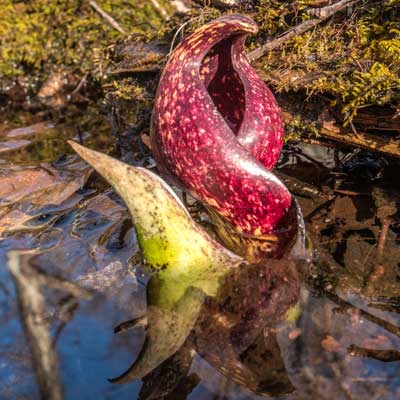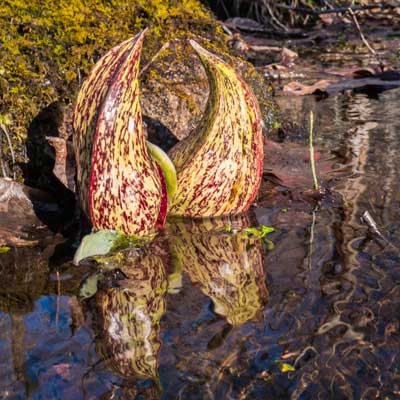Symplocarpus Foetidus: smelly fruits

It’s March and there are hundreds of baby skunk cabbages in the creek along the Blue Trail. The “baby” is actually a reddish purple or mottled yellow shell (the spathe) that holds a cluster of flowers attached to a spike (the spadix). The spathes are miraculous little space heaters that keep the prenatal buds between 60° and 70° and as a side-effect, can melt snow or ice. This thermogenesis is accomplished by metabolizing starch that had been stored in the roots over the winter. A few weeks ago, several of these pointy gnomes were peeking through the snow.
Next to the purple shell, there’s what appears to be a second spathe that’s green, though it’s actually a curl of green leaves. These will unfurl to be a large stinky adult skunk cabbage. The plants have evolved to smell like dead animals to attract early garbage-loving pollinators such as some flies and beetles while repelling early forest carnivores such as deer and rabbit. The fetid odor is actually a good thing for us humans, since the leafy greens look good enough to eat, but would in fact make a poisonous salad.
